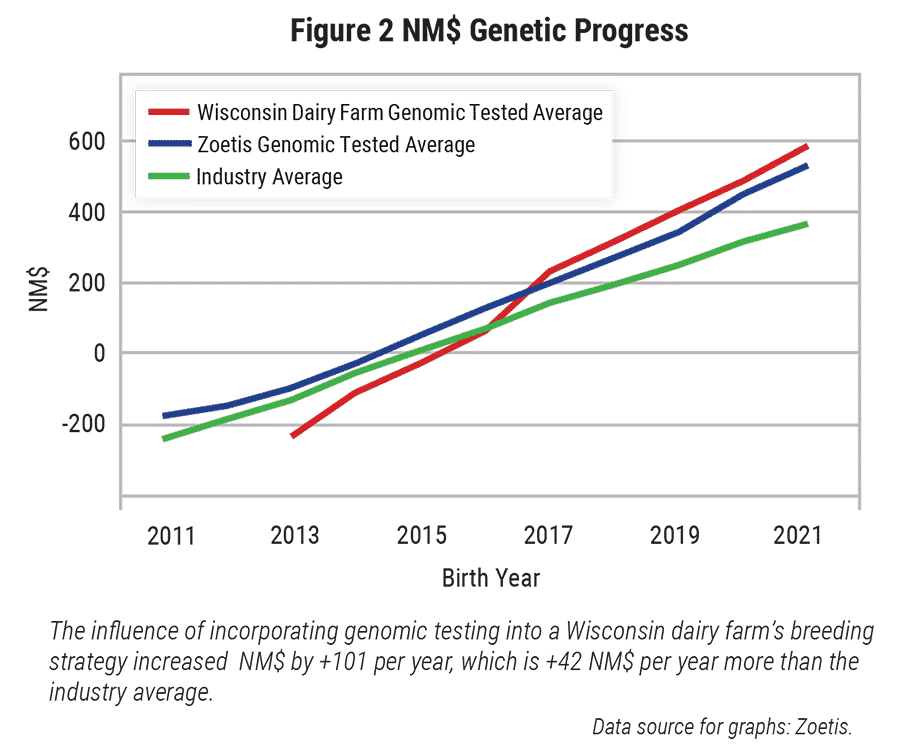Susie Martin, CentralStar Regional Consulting Manager
You inherently know who the best animals in your herd are, and you can back it up with parent averages (PA), milk weights or other DHI data. Obviously, you build your future from the best, but what if what you think, really isn’t the case.
As dairies continue to right-size heifer inventories and diversify farm income by breeding genetically inferior animals to specific beef sires, it’s even more important to know who the best animals in the herd really are. We’ve learned it’s not always which ones you think, and it’s almost never every heifer you have.
Tools the industry has traditionally relied on have been good at helping herds make genetic progress, but the availability of genomic testing makes those predictions much better. Genomic testing provides more reliable data (~70% reliability) for making decisions, compared to ~30% for PA (if the parentage is correct). Additionally, PAs assume offspring receive 50% of its genes from the dam and 50% from the sire, so full siblings have the same values. All we have to do is look at our kids or siblings to know that’s not accurate. In fact, there are more than 1.153 quintillion genetically-unique individuals that can arise from a mating between a given sire and dam. Without genomic-test data, decisions are made with PA, which doesn’t show any difference in full siblings, as they would all have the same average.
In addition, genomic testing finds animal misidentification, which is increasingly important as dairies have stopped raising excess heifers. Even with the best record-keeping system, animal-identification errors occur. On average, Zoetis has reported animal misidentification occurs approximately 18% of the time. When herds genomic test, it uncovers and corrects those parentage errors and allows more precision to be applied in genetic strategy.
Furthermore, genomic testing provides accurate data for Select Mating Service® (SMS®). The individual-genomic information applied to SMS provides precise data for production, type, and health traits. SMS utilizes genomic data to rank animals correctly.
Genomic testing can be a powerful tool for advancing a herd’s genetic progress to create profitable animals that have high production, high fertility, and disease-resistant traits. Figure 1 shows improvement made in Net Merit Dollars (NM$) over a five-year period when genomic testing was included in the breeding strategy. As you see, there is a 239 NM$ advantage for the peer group compared to the industry average. But, what’s that genetic progress worth? How does it show up on your income statement? Through a Penn State study, it was determined there is a standardized-lifetime profit of $1.07 for every $1 change in NM$, which means $255 more lifetime profit per animal.

Studies are great, but let’s look at a real CentralStar herd I work with. Figure 2 is a herd that’s been genomic testing since 2013 and reflects similar improvements in NM$ progress. Over the 10-years they’ve been genomic testing, the dairy has increased NM$ by 101 per year, which is 42 NM$ per year more than the industry average. After ten years of this accelerated gain, this represents nearly $450 more standardized-lifetime profit, per animal, if they yield the same benefits that were found in the Penn State study.

To look at it another way, Figure 3 shows the relationship between Dairy Wellness Profit Dollars® (DWP$®) and lifetime performance as described in the Journal of Dairy Science 2020 validation of lifetime profitability and correlation to DWP$. As you can see, when selection pressure is applied using DWP$, there is an advantage to lifetime profit, income over feed costs, and lifetime energy-corrected milk (ECM).
Clearly, there’s a case for incorporating genomic testing into your breeding strategy. Talk with your CentralStar team to explore the benefits of genomic testing, and accelerate your genetic strategy.
